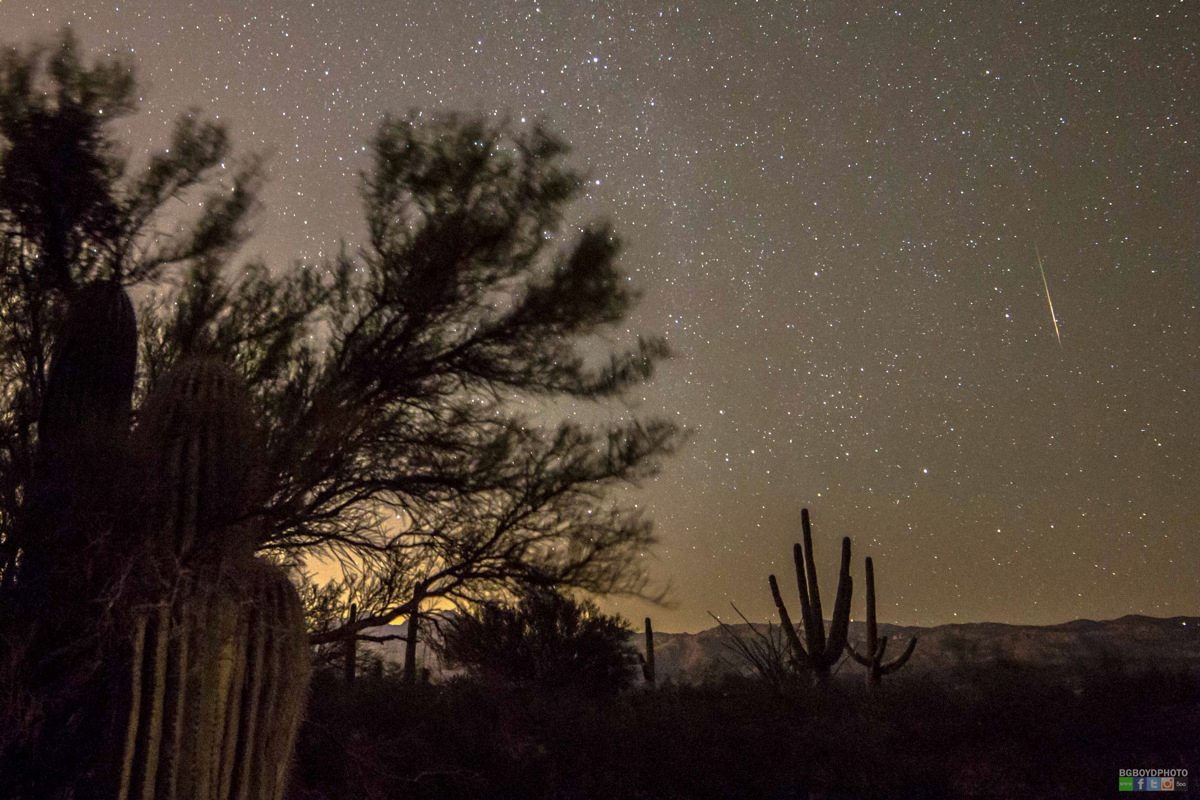
A meteor shower spawned by the famous Halley's Comet reaches its maximum overnight tonight (Oct. 21-22), and you can watch the celestial display online.
The Orionid meteor shower of 2015 will peak just before dawn Thursday morning (Oct. 22), a time when observing conditions should be good for people across North America. (The moon will set around 1:30 a.m. local time, leaving the skies dark.)
However, if clouds or light pollution inhibit your view, you can watch the shower online via the Slooh Community observatory and NASA's Marshall Space Flight Center. The Slooh Orionids webcast will begin at 8 p.m. EDT (0000) GMT) and will be hosted by Slooh astronomer Bob Berman. You can also watch the webcast on Space.com, courtesy of Slooh.
NASA will also host an all-night webcast to showcase the Orionids The lengthy webcast will be streamed live from the space agency's Marshall Space Flight Center in Huntsville, Alabama, beginning at 10 p.m. EDT (0200 GMT), so keep your fingers crossed for a clear night in the Southeast. You can watch the webcast directly via Marshall's Ustream channel here: http://www.ustream.tv/channel/nasa-msfc.
Even if the weather cooperates, however, don't expect too many fireworks.
"The Orionids will probably show weak activity this year," Bill Cooke, head of the NASA Meteoroid Environments Office, which is based at Marshall, said in a statement. "Bits of comet dust hitting the atmosphere will probably give us about a dozen meteors per hour."
Like other annual meteor showers, the Orionids occur when Earth plows into a field of debris shed by a comet. In the case of the Orionid meteor shower, the comet is Halley, which last zoomed past our planet in 1986 and won't come back through the inner solar system again until 2061.
Get the Space.com Newsletter
Breaking space news, the latest updates on rocket launches, skywatching events and more!
Another annual shower, the Eta Aquarids in May, also owes its existence to bits of material shed by Comet Halley over the eons on its long journey around the sun.

The Orionids received their name because they appear to emanate from the constellation Orion (The Hunter). But don't worry about finding this star pattern late tonight or early Thursday morning — Orionid meteors can be spotted in all parts of the sky.
So grab a lawn chair, a sleeping bag and a nice, hot beverage and settle in for a few hours of skywatching tonight. Or, failing that, check the skies above Huntsville online to catch some Orionid action.
Editor's note: If you snap a great photo of an Orionid meteor or any other night sky sight you'd like to share with Space.com and its news partners for a possible story or image gallery, send the and comments in to Space.com Managing Editor Tariq Malik at spacephotos@space.com.
Follow Mike Wall on Twitter @michaeldwall and Google+. Follow us @Spacedotcom, Facebook or Google+. Originally published on Space.com.
Join our Space Forums to keep talking space on the latest missions, night sky and more! And if you have a news tip, correction or comment, let us know at: community@space.com.

Michael Wall is a Senior Space Writer with Space.com and joined the team in 2010. He primarily covers exoplanets, spaceflight and military space, but has been known to dabble in the space art beat. His book about the search for alien life, "Out There," was published on Nov. 13, 2018. Before becoming a science writer, Michael worked as a herpetologist and wildlife biologist. He has a Ph.D. in evolutionary biology from the University of Sydney, Australia, a bachelor's degree from the University of Arizona, and a graduate certificate in science writing from the University of California, Santa Cruz. To find out what his latest project is, you can follow Michael on Twitter.









